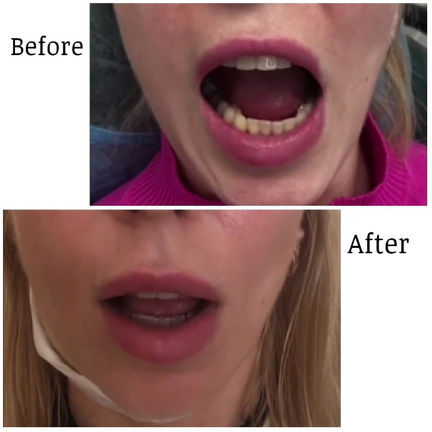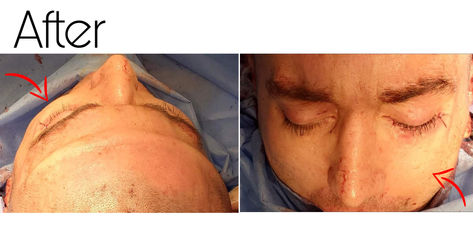Ukraine, Vinnytsia
(099) 364-79-70
(063) 163-18-16
Kobiakov Olexander
Osteosynthesis of facial bone fractures
The concept of functionally stable osteosynthesis of fractures is currently the gold standard in the treatment of facial bone fractures.
Результати лікування
Clinical case 1:
Osteosynthesis of fractures of articular sprouts and mandibular angle
Diagnosis: Fracture of the right and left articular growth of the mandible, fracture of the angle of the mandible.
Surgical treatment: open repositioning and fixation of fracture fragments with titanium micro-, mini-plates and screws.
Functionally stable osteosynthesis allowed to remove the tires on the 7th day after surgery, despite the complexity of the high fracture of the left articular sprout. The patient returned to full life.
Clinical case 2:
Reconstruction of the orbit with an individualized implant
Diagnosis: Break of the fundus on the left.
Surgical treatment: reconstruction of the orbit with an individualized implant made of bioinert material.
In this clinical case, a fracture of the fundus led to damage to the oculomotor muscles, accompanied by their dysfunction and movements of the eyeball become limitations: the inability to look down with the damaged eye. _cc781905-5cfb-13694
The patient underwent reconstruction of the fundus with an individualized implant, which was modeled and printed on a 3D printer made of bioinert material peek (polyesterirketone) ._ cc781905-5cde-3194-bb3b-136bad5cf58d_
After surgical treatment, the function and movements of the eyeball are restored. The patient returned to full life.
Surgeon: Alexander Kobyakov
Bioengineer: Oleksiy Likhitsky (implant modeling and printing) ._ cc781905-5cde-3194-bb3b-136bad5cf58d_
Clinical case 3:
Osteosynthesis of the maxillofacial complex and reconstruction of the fundus floor
Diagnosis: Fracture of the right chin - orbital complex, reflux - fracture of the bottom of the right orbit.
The injury was caused by an accident.
Surgical treatment: Osteosynthesis of the maxillofacial complex and reconstruction of the orbital floor by intraoral and transconjunctival accesses.
















